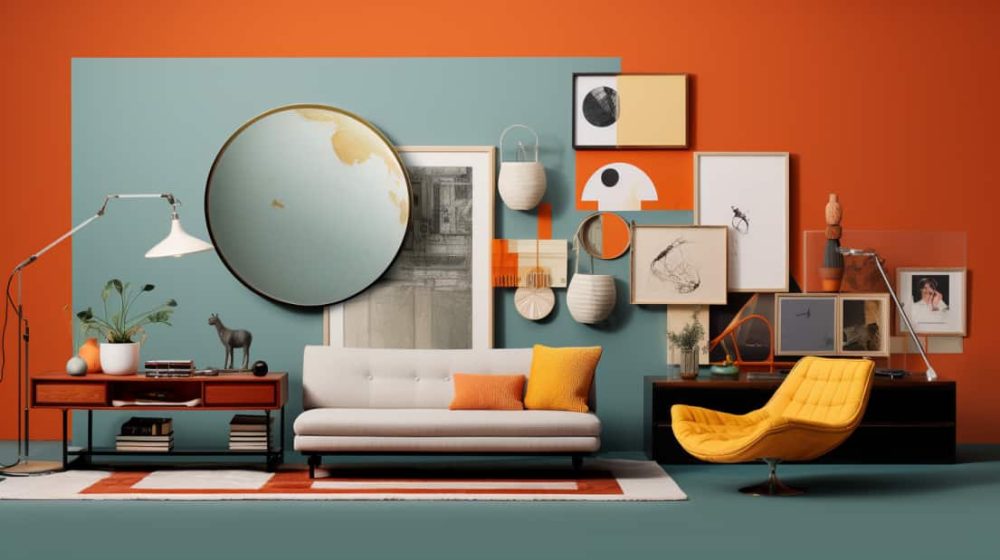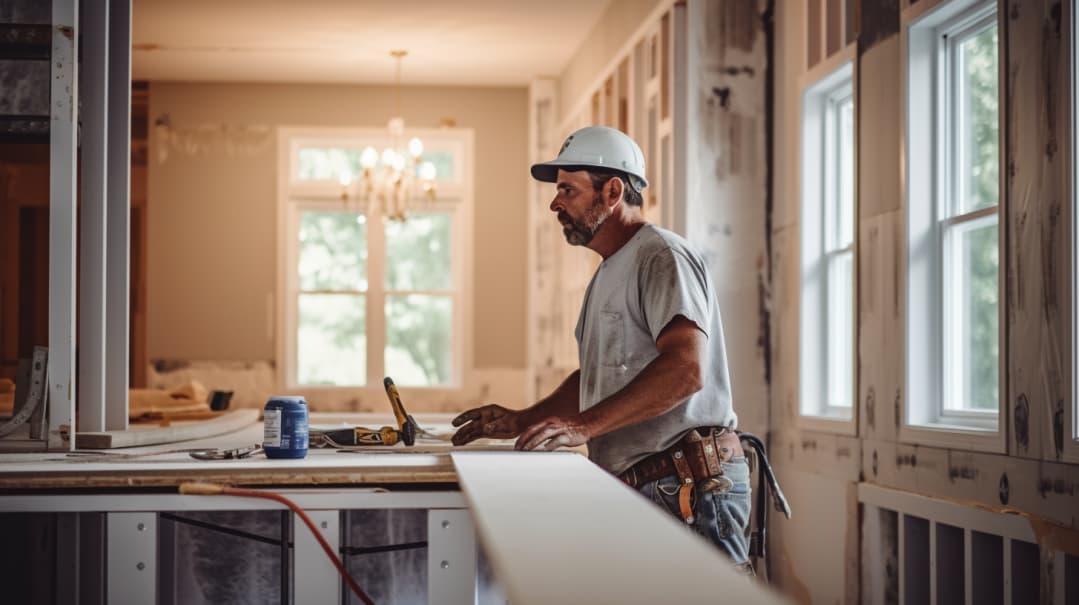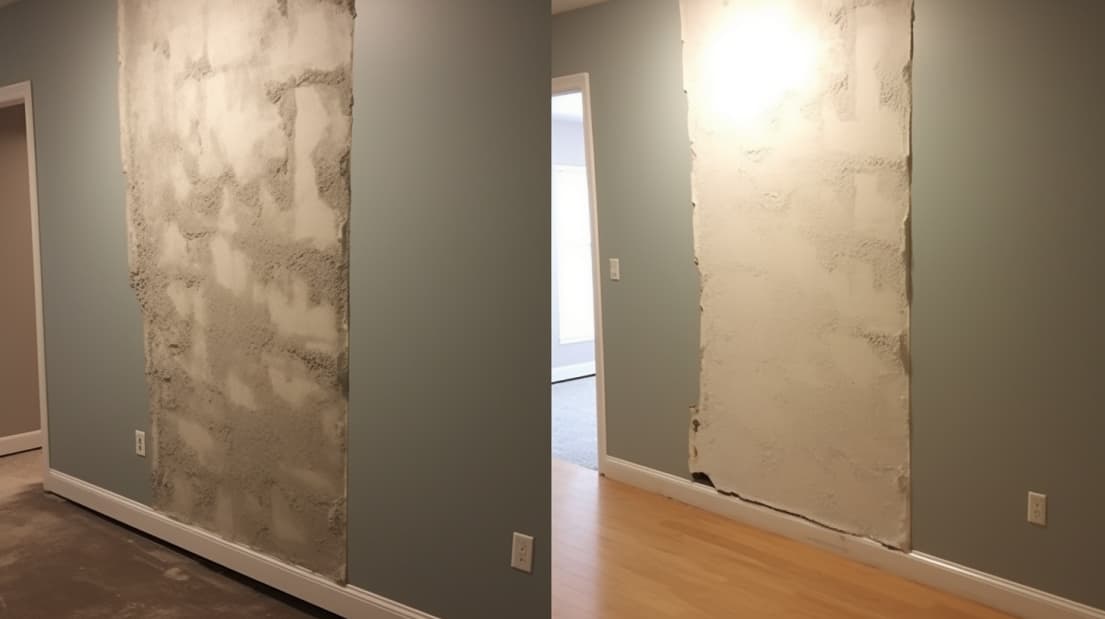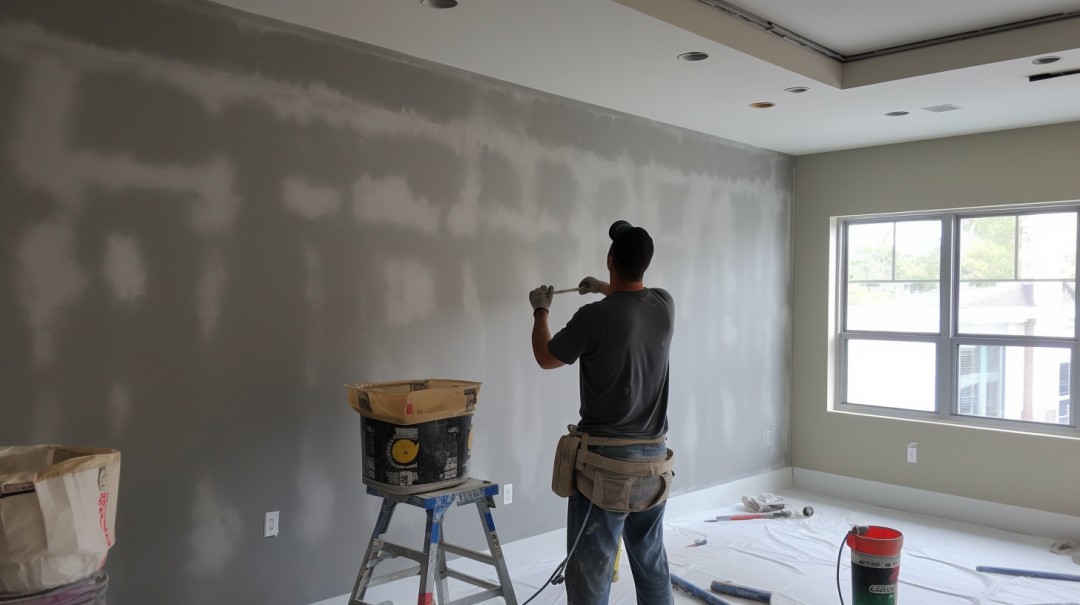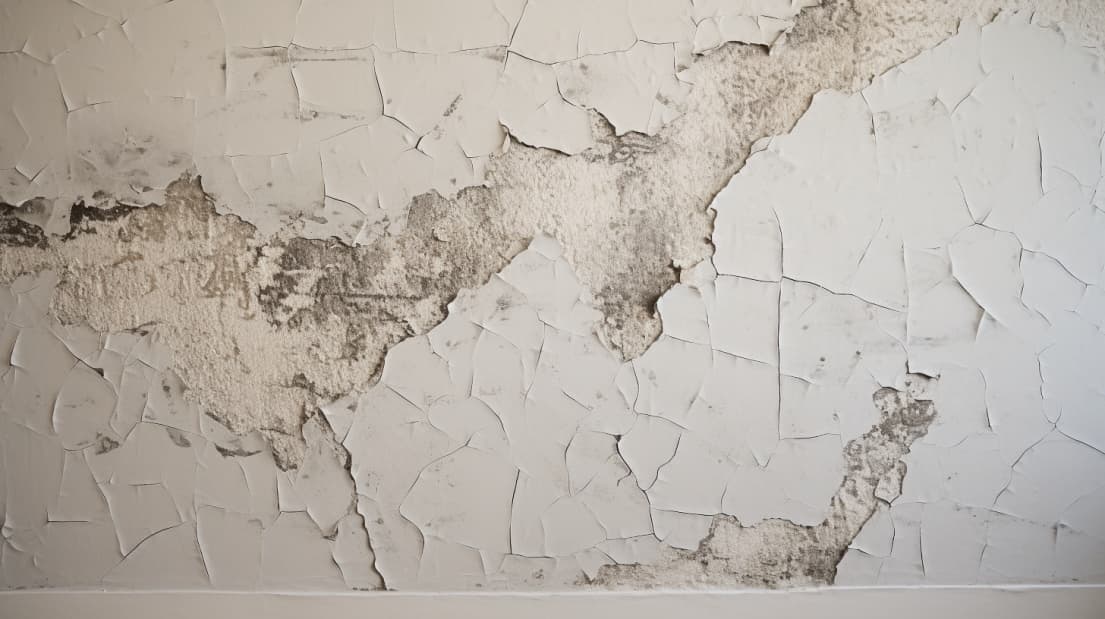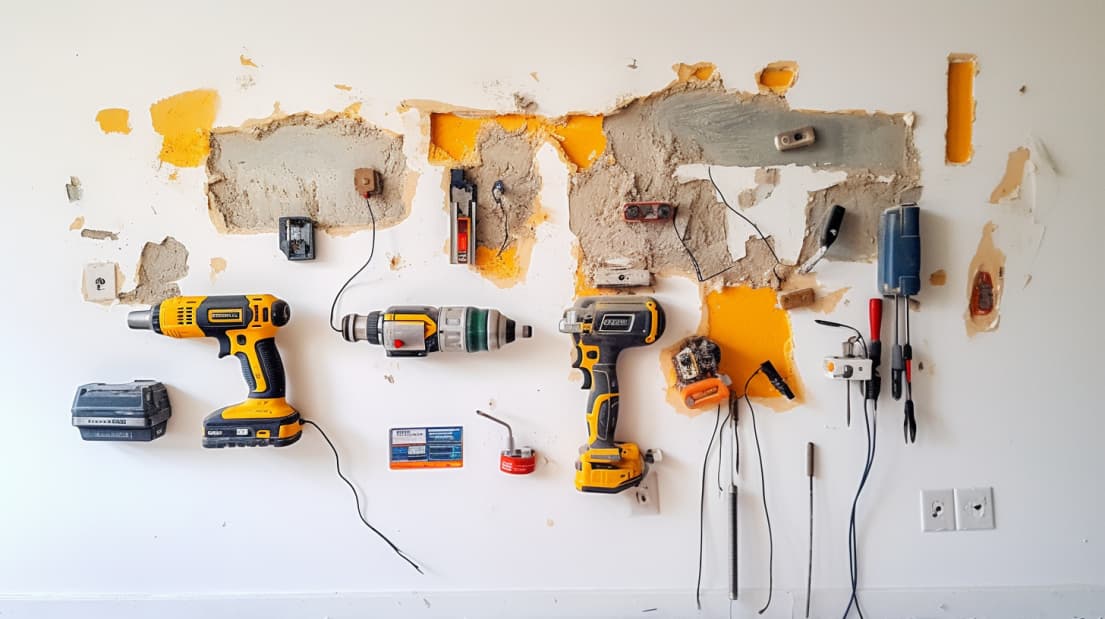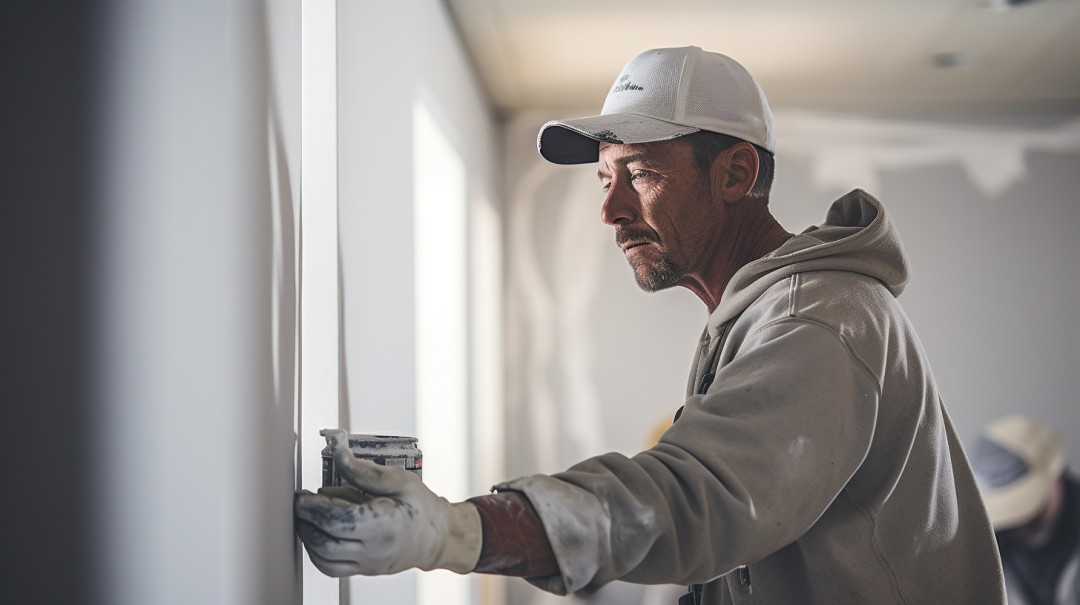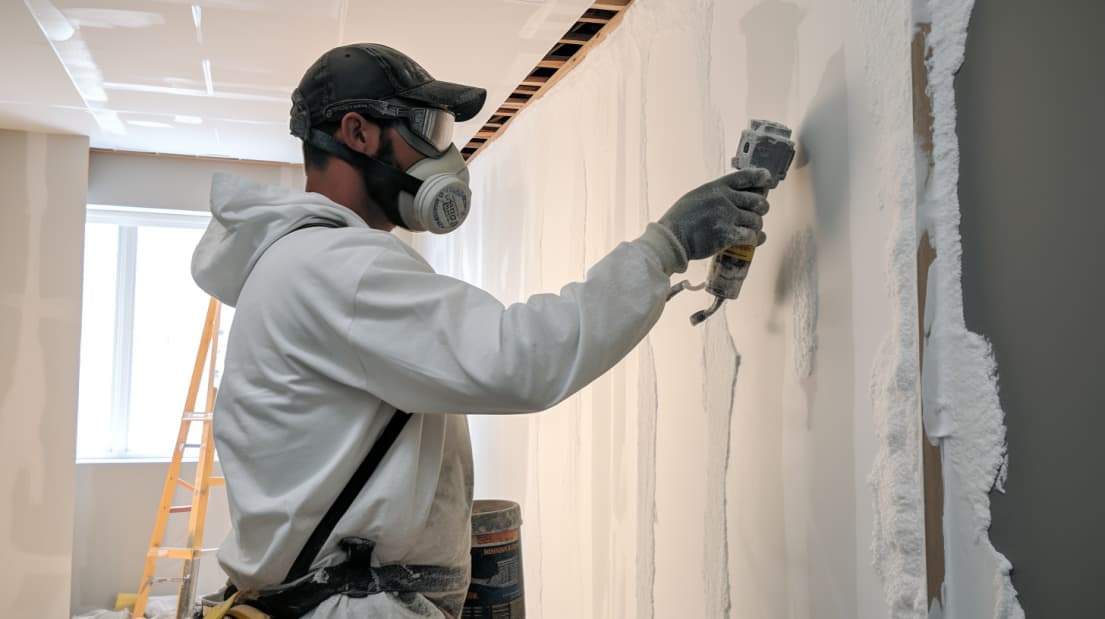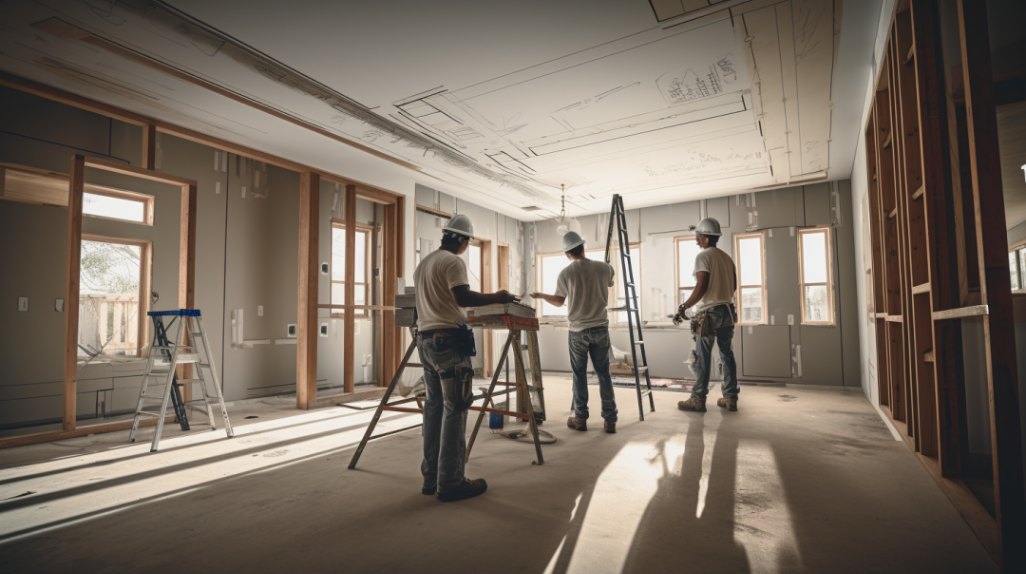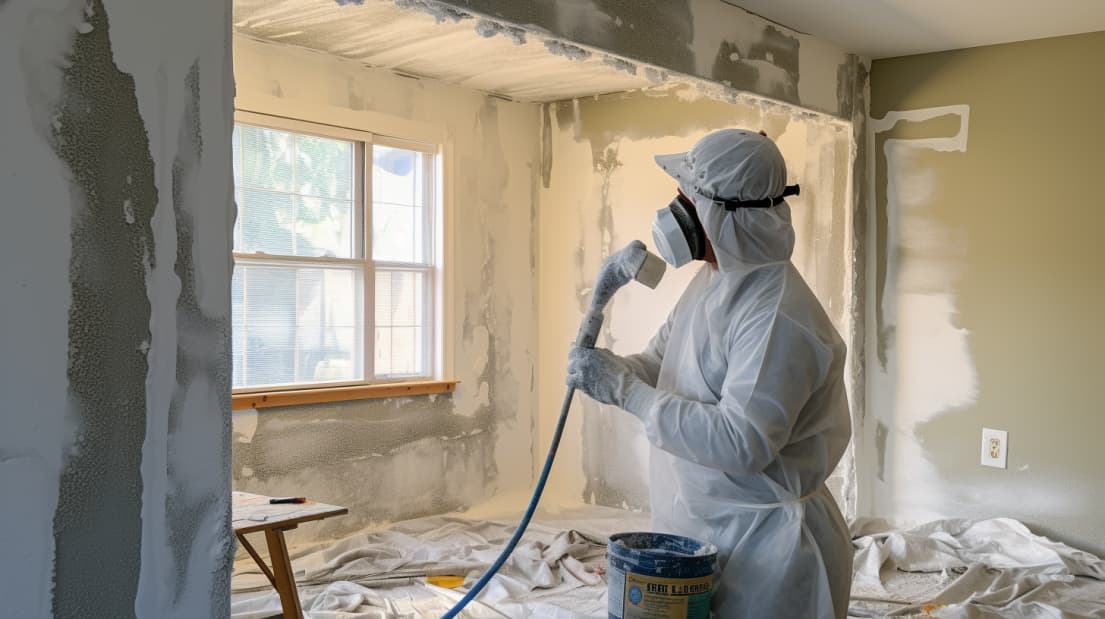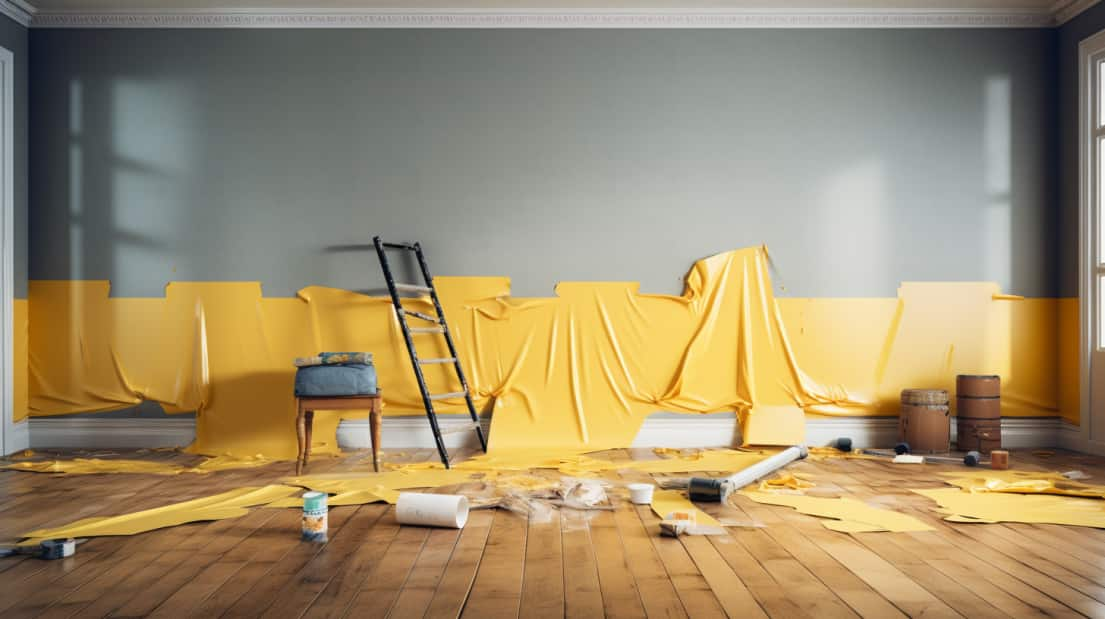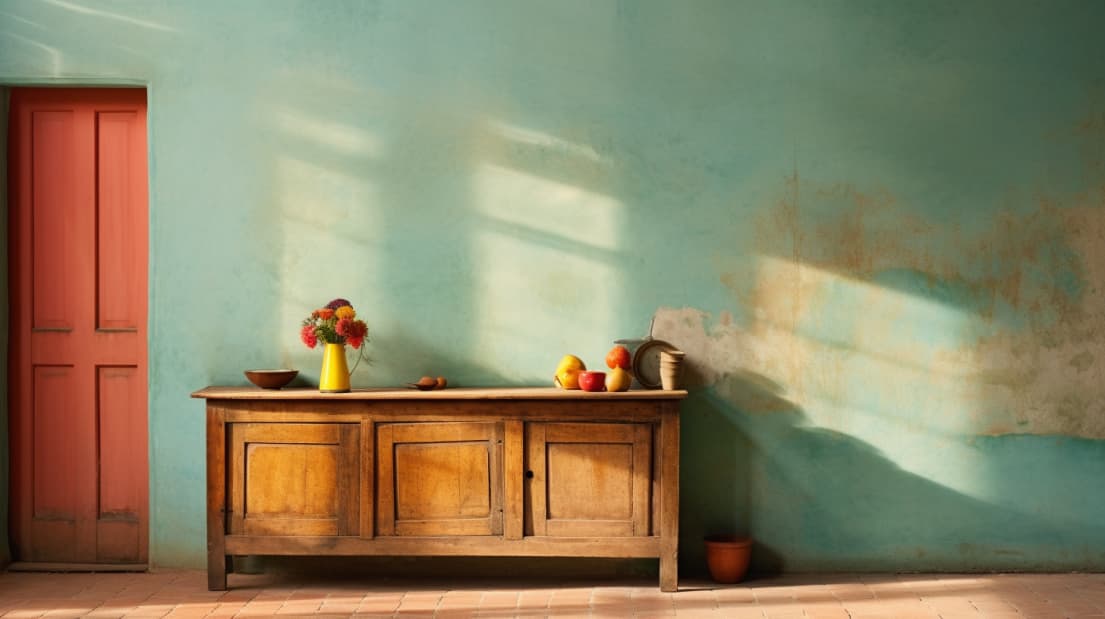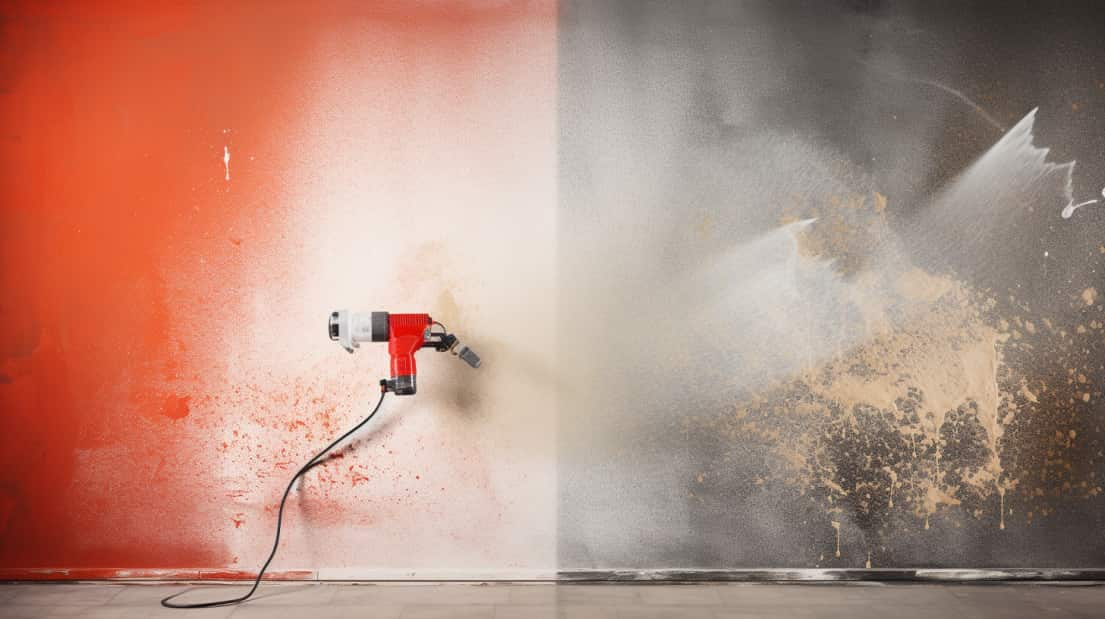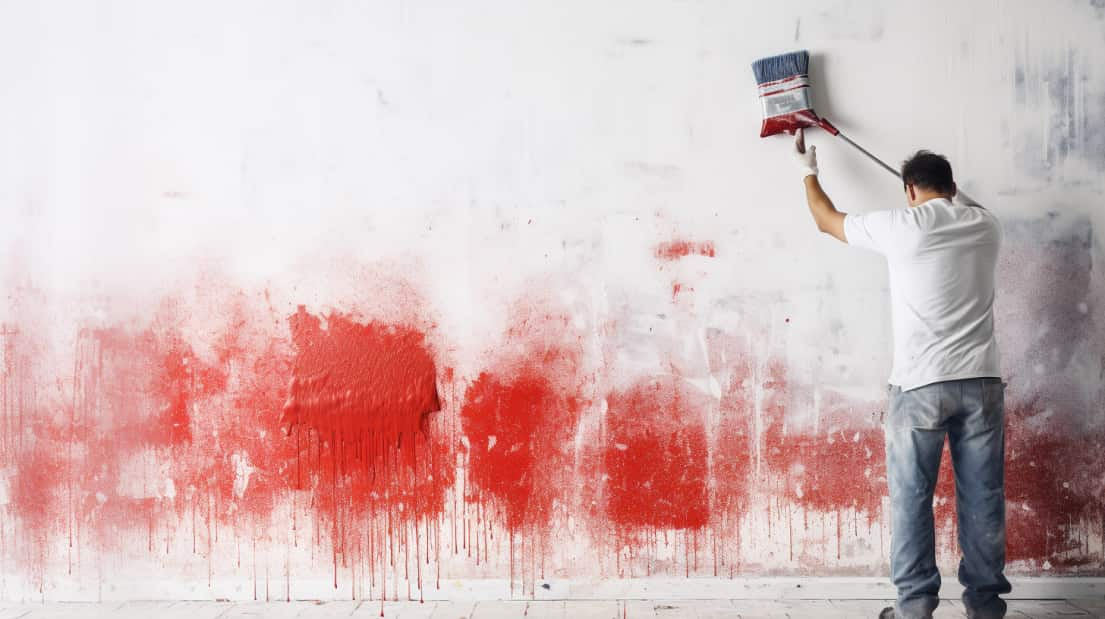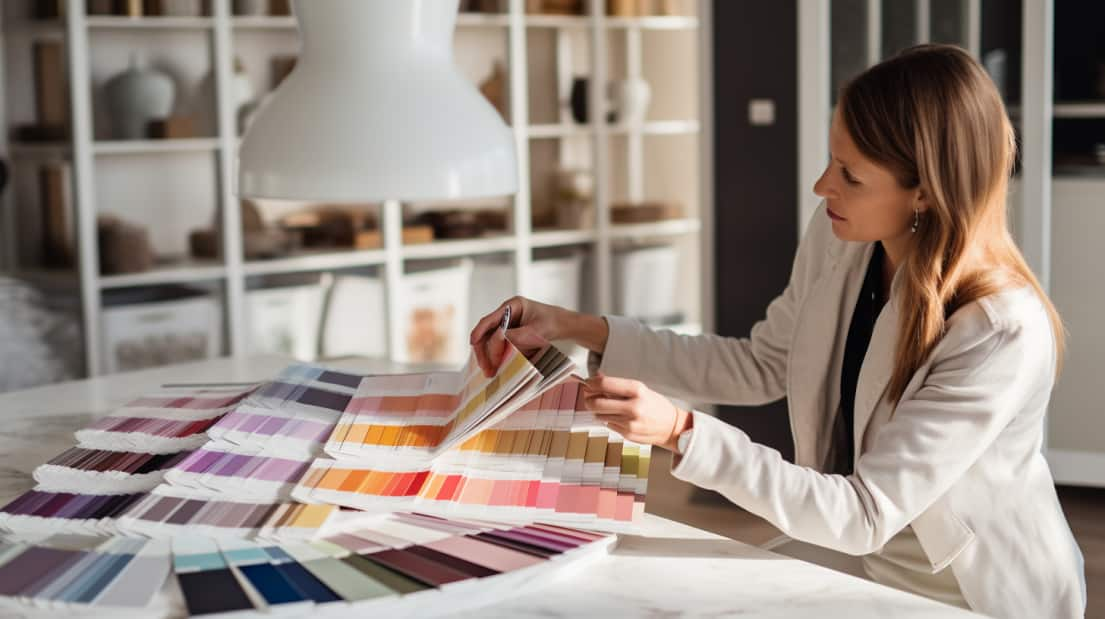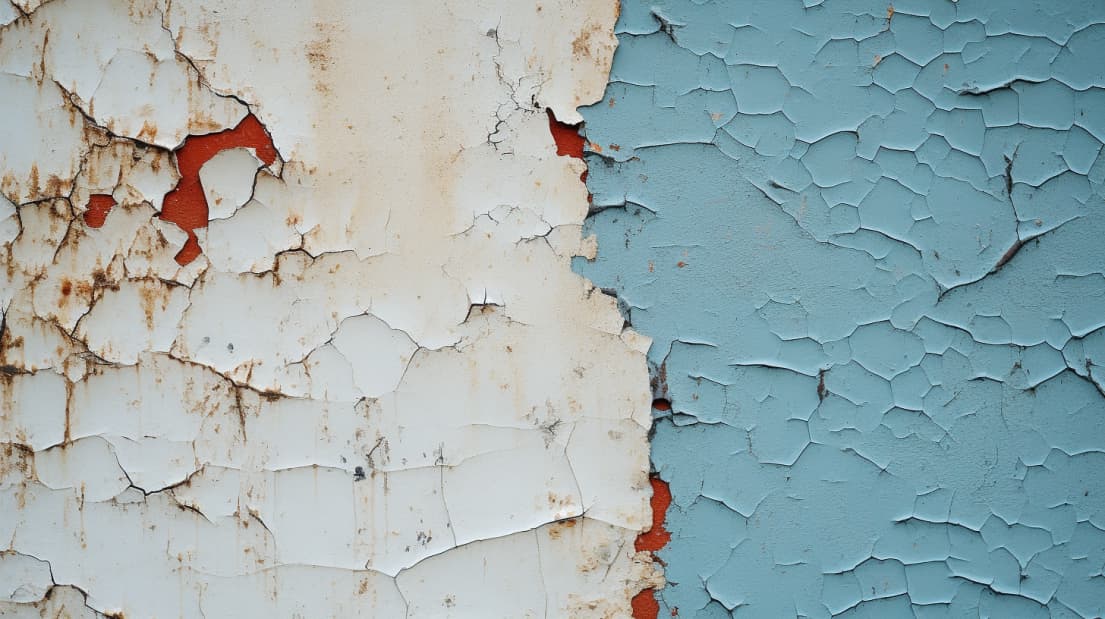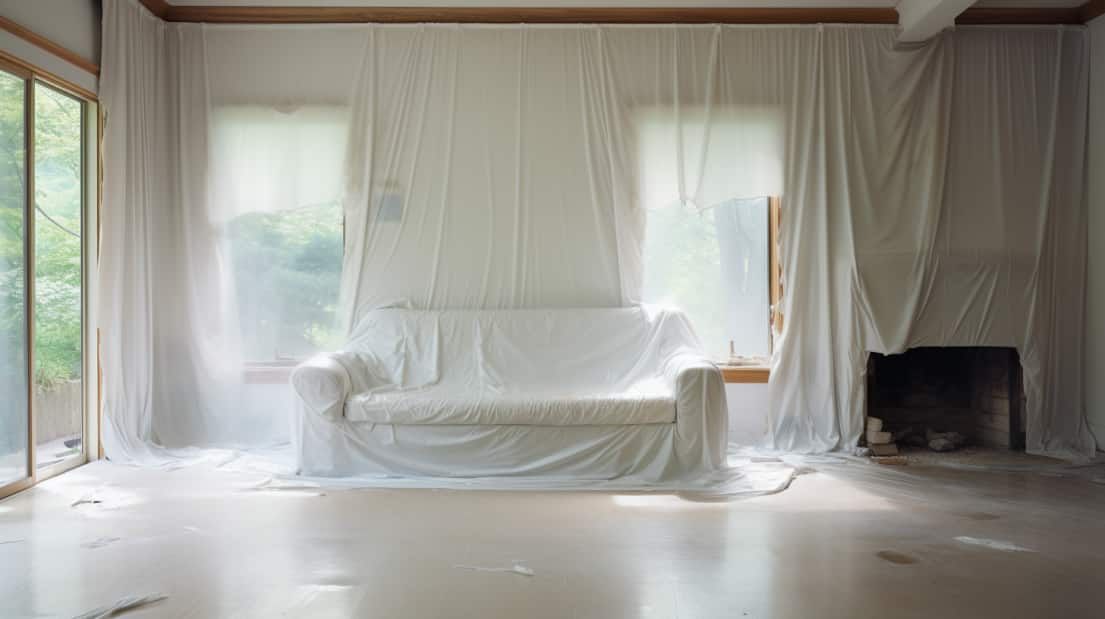Are you looking to give your home a fresh new look without breaking the bank? Look no further than strategic paint choices. By highlighting architectural features with precision, you can transform any space into a stunning masterpiece.
The first step in this process is assessing your space. Take note of the existing colors and textures in the room, as well as any architectural details that you want to highlight. From there, choose the right colors to complement these features and create a cohesive look throughout the space. With some careful consideration and planning, you can accentuate ceilings and molding, make small rooms feel larger, and pull it all together for an impressive finished product. So grab your paintbrushes and get ready to elevate your home’s design with strategic paint choices!
Assessing Your Space
You’ll need to take a step back and really look at your space, imagining how each architectural feature could be highlighted with precision. To start, measure the dimensions of each wall and feature so you can plan accordingly. This will help you determine which areas of the room you want to emphasize and which ones may need to be toned down.
Another important factor to consider is natural light. Analyze where the light comes in from and at what times of day it’s strongest. This will give you an idea of how different colors will look throughout the day and help you choose a color scheme that works well with the amount of natural light in your space. By taking these steps before diving into paint swatches, you’ll have a better understanding of how to highlight your home’s features with precision.
Choosing the Right Colors
When it comes to choosing the right colors for your space, there are a few key points to consider. First, you want to think about how the colors will complement any existing architectural features in the room. Secondly, creating contrast and depth can add visual interest and dimension. Lastly, using color strategically can alter the perception of space in a way that enhances the overall design. Keep these factors in mind as you select your paint colors to achieve the desired effect in your space.
Complementing Existing Features
By complementing the existing architectural features with carefully chosen paint colors, you can enhance the beauty of your space and create a cohesive design. When selecting paint colors, it’s essential to consider the materials used in your home’s construction. By matching materials such as wood or brick with complementary shades, you can create a harmonious look that highlights these features.
In addition to matching materials, blending textures is another way to complement existing architectural features. For example, if your home has stone accents or intricate molding, choosing a matte finish for the walls can help draw attention to these elements without overpowering them. By taking into account both texture and color when selecting paint choices, you can achieve a sophisticated look that highlights your home’s unique features.
Creating Contrast and Depth
To add dimension and interest to your space, it’s important to consider the contrast and depth of your paint choices. One way to do this is by playing with texture. Using a textured paint on an accent wall or ceiling can create a visually interesting focal point in the room. Alternatively, you can experiment with different finishes such as matte, glossy, or metallic to create contrast between different surfaces.
Another way to create contrast and depth is by using color blocking techniques. This involves painting adjacent walls in contrasting colors or choosing one bold color for an accent wall while keeping the rest of the walls neutral. This technique not only adds depth but also helps highlight architectural features like crown molding or built-in bookshelves. By carefully considering your paint choices and experimenting with texture and finishes, you can transform a plain space into a dynamic and inviting one.
Using Color to Alter Perception of Space
Colors can completely change how we perceive the size and shape of a room, so it’s important to choose hues that work in harmony with your space. Color psychology plays a big role in this process as there are certain colors that tend to make spaces feel larger or smaller. For example, lighter and cooler colors such as blues and greens can make a room feel more spacious, while warmer and darker colors such as reds and browns can make it feel smaller.
In addition to color psychology, illusion techniques can also be used to alter the perception of space through paint choices. One technique is using horizontal stripes on walls which can visually widen a narrow room. Another technique is painting the ceiling a lighter color than the walls to create an illusion of height. By using these techniques along with strategic paint choices, you can transform your space into one that feels just right for you.
Accentuating Ceilings and Molding
Highlighting the beauty of ceilings and molding is easy with strategic paint choices. You can add instant ceiling drama by painting it in a bold color, like navy blue or deep green, to create a statement piece that draws the eye upwards. Alternatively, you can use lighter shades to make the ceiling appear higher and more spacious.
For molding magic, consider using contrasting colors to highlight its intricate details. Darker hues create depth and shadowing while lighter ones emphasize the molding’s curves and edges. If you want to highlight specific areas of your molding, use metallic accents like gold or silver on raised parts for an elegant touch. Remember that these techniques work best when paired with neutral wall colors to avoid overwhelming the space. With these tips in mind, you’ll be able to transform any room into a stunning showcase of architectural features through strategic paint choices.
Making Small Rooms Feel Larger
When you’re dealing with a small room, every inch counts. But don’t worry – there are ways to make it feel larger than it actually is. First, try using light colors and contrasts to create an illusion of depth and space. Second, aim for visual continuity by choosing similar tones throughout the room. Finally, use paint to alter perception of space by painting walls in a lighter color and ceilings in a darker shade to give the impression of height.
Using Light Colors and Contrasts
By using light shades and creating contrasts, you can effectively emphasize the unique architectural features of a space. This approach is based on color psychology – where lighter colors are known to create an illusion of spaciousness. The key is to maintain tonal balance in the room by choosing complementary hues that blend well with each other.
For instance, painting the walls in a light shade of beige or cream creates an airy and inviting feel that complements any natural lighting present. Pairing it with white trims and baseboards will enhance the contrast between different architectural elements such as moldings, door frames, and windows. Additionally, adding a pop of color through accent pieces like throw pillows or artwork can add character to your space while still maintaining its overall lightness. Overall, using light colors and contrasting accents is an effective way to highlight your home’s unique features without overwhelming them with darker shades.
Creating Visual Continuity
Creating visual harmony in your space begins with carefully selecting a cohesive color palette. Consider the color psychology behind each hue and its impact on the atmosphere you want to create. For instance, vibrant warm colors like reds and yellows can infuse energy and liveliness, while cool blues and greens can promote a sense of tranquility and serenity.
When exploring color ideas, don’t forget about the power of accent colors. These bold hues can add pops of visual interest and create focal points within your design. Look for complementary colors that enhance each other’s vibrancy and create an eye-catching contrast. Whether it’s a striking accent wall or carefully curated decor pieces, accent colors can elevate your space from ordinary to extraordinary.
Furthermore, consider the concept of visual flow when planning your color scheme. By strategically using paint to highlight architectural features such as molding or trim work, you can guide the eye throughout the room. This creates a sense of cohesion and ensures that the space feels harmonious and inviting. Be mindful of how colors interact with each other and how they lead the gaze from one area to another, enhancing the overall aesthetic and functionality of the space.
Remember, the power of color extends beyond mere decoration. It has the ability to influence emotions, set the tone, and create a cohesive and captivating design. So, explore various color palettes, experiment with accent colors, and master the art of visual flow to curate a space that not only looks stunning but also feels harmonious and inviting to all who enter.
Pulling it all Together
Now is the time to bring everything together and showcase the true beauty of your space with carefully selected paint colors that highlight each architectural feature. By using color psychology, you can create a harmonious ambiance that aligns with your vision. Start by considering the room’s purpose and choose shades that promote relaxation, creativity, or productivity.
Once you’ve narrowed down your color scheme options, it’s time to coordinate accents such as furniture, artwork, and decorative items. Don’t shy away from bold pops of color or patterns; just make sure they complement rather than clash with your chosen paints. Remember to experiment with different lighting sources to see how they interact with your choices and adjust accordingly until everything pulls together seamlessly. With these simple tips in mind, you’ll be able to transform any space into a stunning masterpiece that highlights its unique features while creating an inviting atmosphere for all who enter.
Final Thoughts
So, you’ve made the decision to revamp your home’s interior with strategic paint choices. Congratulations on taking the first step towards a refreshed and personalized space! By assessing your space, choosing the right colors, accentuating ceilings and molding, making small rooms feel larger, and pulling it all together with precision, you can turn any room into a showstopper.
Remember that the key to successful painting is patience and attention to detail. Take your time selecting the perfect colors and finishes for each area of your home, and don’t be afraid to experiment with different techniques. With some practice and experimentation under your belt, you’ll soon discover just how transformative a fresh coat of paint can be. So go ahead – grab that brush and let your creativity shine!


